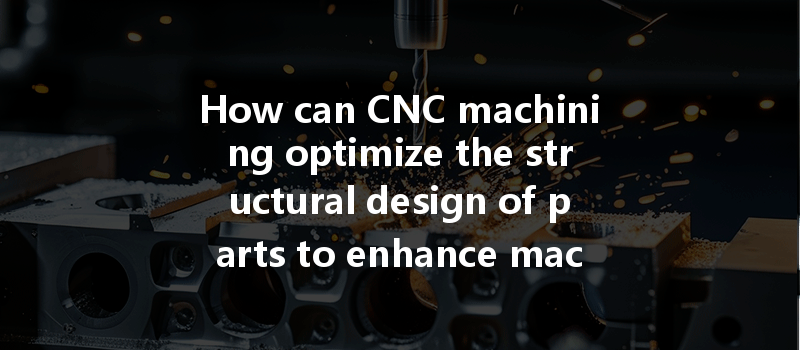Did you know that approximately 70% of the costs associated with manufacturing typically stem from inefficient machining processes? This statistic highlights the importance of optimizing structural designs in CNC machining to yield significant improvements in efficiency and sustainability. As industries increasingly demand high-quality, precise, and cost-effective components, understanding the intricacies of optimizing structural design becomes paramount for engineers, manufacturers, and businesses alike.
In this comprehensive blog, we will delve deep into the symbiotic relationship between structural design and CNC machining efficiency. We will explore various techniques to enhance the structural design of parts, focusing on practical solutions applicable to modern CNC machining processes. With a wealth of information at your fingertips, you will gain insight into the importance of thoughtful design decisions and learn best practices to enhance machining performance.
Understanding CNC Machining
Before diving into the means of optimizing structural designs, let’s first establish a solid understanding of what CNC machining entails. CNC, or Computer Numerical Control, machining refers to the automated control of machining tools via pre-programmed computer software. This technology covers a variety of processes, including milling, turning, drilling, and grinding. The result is an ability to create intricate parts with high levels of accuracy and repeatability.
The Advantages of CNC Machining
The Role of Structural Design in CNC Machining
Structural design refers to the process of defining the shape, dimensions, and assembly of components. It plays a pivotal role in how a part will be machined. Well-thought-out designs can simplify machining operations, enhance the integrity of the final product, and substantially reduce machining time and associated costs. Optimizing these designs fundamentally influences machining efficiency.
Key Factors Influencing the Optimization of Structural Design
To comprehensively assess how to enhance the structural design of parts in CNC machining, we must consider several key factors:
Techniques for Optimizing Structural Design in CNC Machining
Now that we understand the foundational elements influencing structural design in CNC machining, let’s explore various techniques for optimizing these designs to enhance machining efficiency.
FEA involves simulating the physical behavior of a part under specific conditions. By modeling stress distribution, you can identify weak points and adjust the design accordingly before it goes into production. This proactive approach helps in reducing the need for excessive material and ensures that the part can withstand operational stress without unnecessary weight.
Applying DFM principles involves analyzing the component’s design to ensure it is efficient and cost-effective for manufacturing. Key considerations might include:

Choosing less dense, stronger materials can reduce the weight of the finished product while ensuring stability and durability. For instance, utilizing advanced aluminum alloys rather than traditional metals may lead to improvements in both performance and machining efficiency.
Utilizing standard tool sizes and profiles reduces tooling costs and increases availability. When designing parts, incorporating standardized holes, slots, and other geometric features can simplify the CNC programming and reduce the time required for setup.
If high-volume machining is required, consider employing nested layouts, which group multiple components together on a single sheet of material. This maximizes material usage while minimizing waste and machining time. This approach enhances efficiency while maintaining cost-effectiveness.
Employing simulation software to verify machining operations allows for real-time troubleshooting and adjustments. This can be particularly useful in identifying potential issues and ensuring that each component can be manufactured within its specified tolerances.
Adjusting tolerances appropriately is vital for balancing part performance and machining efficiency. Understanding which areas require tighter tolerances based on function allows for more leeway in areas where precision is less critical. This reduces time spent on precision machining and can lead to cost savings.
Common Challenges in Structural Design Optimization
Despite the myriad of benefits from optimizing structural designs, several challenges may emerge throughout the process:
The Future of Structural Design Optimization in CNC Machining
Looking forward, it’s crucial to consider the evolving technologies and trends affecting CNC machining and structural design. Here are some trends to watch:
Optimizing the structural design of parts in CNC machining is more than a mere technical exercise; it’s a fundamental practice that impacts efficiency, costs, and the overall success of manufacturing operations. By harnessing techniques like FEA, DFM principles, careful material selection, and simulation tools, businesses can improve their machining outcomes exponentially.
Ultimately, a deeper understanding of how structural design influences CNC machining enhances not only the manufacturing process but also contributes to the sustainability and economic viability of projects. In a competitive landscape, recognizing the intricacies of design optimization will ensure that organizations remain at the forefront of innovation and efficiency.
This blog emphasizes the significance of thoughtful design in CNC machining processes. Whether you are a seasoned engineer, a manufacturer, or a business owner seeking to improve project outcomes, contemplating the principles and techniques discussed here can have profound implications. The future of CNC machining is one that champions efficiency, sustainability, and intelligent design—are you ready to embrace it?






